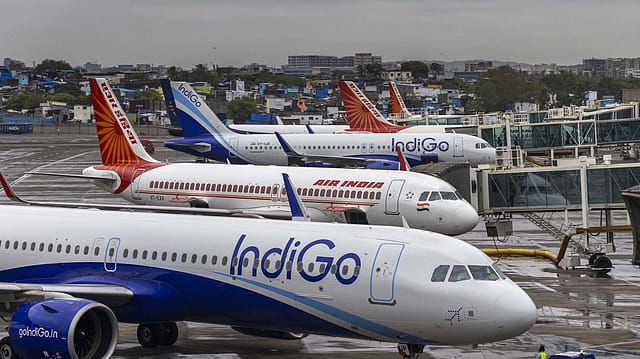Moment of reckoning: Is IndiGo ready for Tata-Air India onslaught in 2023?
ADVERTISEMENT

As we head into the new year, India's largest private airline is on a solid wicket. With a market share of over 50% and demand for flying bouncing back, the last two years of red ink on its balance sheet should soon be a blip, easily forgotten. The fundamentals of the airline remain strong and unless the Indian authorities mess up in some major way, the fundamentals of the economy will fuel the airline's future.
IndiGo's success so far has closely reflected the personality of its two founders: Rahul Bhatia who, armed with his knowledge and expertise of running businesses in India, combined well with the global experience, network and connections of erstwhile founder Rakesh Gangwal. The amalgamation helped build a strong business in as transparent a manner as India's business milieu permits. To their credit, the duo did a remarkable job of not falling in love with themselves - an affliction commonly observed with airline owners and chiefs the world over. At no point through this journey have Bhatia or Gangwal given in to the glamor, flamboyance or razzmatazz that the aviation industry tends to breed. Keeping their head down and getting the job done has been their approach from the word go. The success they spun is visible for all to see and the eventual falling out of the duo remains a matter of deep regret for India's aviation sector.
But no matter how well IndiGo may be poised, it cannot afford to ignore the new creature that is taking shape in our midst. However it emerges in its final form, the new Tata airline - a mixture of many shapes, egos, forms, sizes and cultures - will certainly pose a more credible threat than IndiGo has faced since inception in 2006. Tata Sons has far deeper pockets than any of its rivals so far and the ability to offer a quality product as they have proved with their Taj group of hotels.
January 2026
Netflix, which has been in India for a decade, has successfully struck a balance between high-class premium content and pricing that attracts a range of customers. Find out how the U.S. streaming giant evolved in India, plus an exclusive interview with CEO Ted Sarandos. Also read about the Best Investments for 2026, and how rising growth and easing inflation will come in handy for finance minister Nirmala Sitharaman as she prepares Budget 2026.
Fortunately, IndiGo is neither in denial nor incognizant of the new challenge it faces. The airline is pretty much a changed creature from what it was in 2019. A lot of changes have taken place in the airline, some for the good while some time will tell, as it gears up to take on new competition. This includes virtually a brand new team at the helm with some heavy weight exits including former CEO Rono Datta, former commercial head William Boulter, chief of strategy and revenue and an old loyalist Sanjay Kumar and its head of human resources Raj Raghavan.
As it marches ahead, there are two or three mis-steps or temptations that the airline's management needs to be wary of. Above all, the attitude adopted by the top management vis a vis this new threat will be critical. If the management stays alert, cognizant and humble, it will hold the airline in good stead. An arrogant attitude - we are too big to care - can be its undoing.
The airline has paid a very high price for arrogance in the recent past. Despite the humility and measured approach of its two founders over the years, a discernible arrogance crept into the airline once it achieved a certain size, an arrogance that emanated at the top and trickled down during the tenure of its former president and CEO Aditya Ghosh.
This arrogance and a high-handed approach also ended up alienating a large portion of its commanders and crew post-pandemic when the relationship between this section and the management hit a new low. The matter was poorly handled by the airline, at almost every step, leading to a situation where the management ended up losing the respect it had gained in the past of its most crucial workers and, in some cases, strong loyalists. While the airline has made some amends by raising compensation and trying to mollify bruised emotions, the episode has left many cynical and a simmering hostility continues to linger. This house is more divided than it appears.
A second and perhaps the most critical question the airline's board and management will now need to answer is: where do we go from here? Should IndiGo stick to the knitting or give in to the temptation of facing the new threat with all guns blazing. In other words, does it continue to doggedly focus on what it knows and does best (read : the domestic market and tier 2 and 3) or does it take the riskier path of altering its DNA, reinventing itself to be like an Emirates, a Singapore Airlines or even the new Tata hybrid. Should it metamorphose into a full service airline with wide bodies, long hauls and caviar on board? This is a question that has and will continue to pop up time and again and will lead to an equally divided house at the board level. The final calls taken and the attitude adopted could well seal India's leading private carrier's future, one way or the other.
